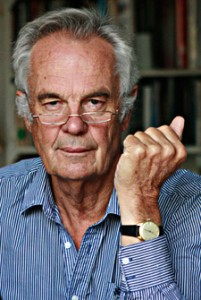The Pope’s challenge to white America.
By Jonathan Power
September 22nd 2015.
The pope will cause waves in America during his visit this week. Invited to speak before Congress by the Speaker of the House of Representatives, John Boehner, he’ll arrive right at the time that the Republican candidates for president are touting ideas that are anathema to Pope Francis.
He detests the cruder aspects of capitalism and the consumer life style so rife in America. The culture of Wall Street and its banks, in particular their performance in precipitating the crash of 2007 and their rush to avoid culpability, he finds distasteful.
Nor has he much time for those who turn their back on the needs of the poor, the unemployed, the discriminated against, those unnecessarily imprisoned or the migrant.
Nor will American political leaders find him giving any support for the kind of wars fought by the US since 9/11. The Republicans will find him way to the left, except on the issue of abortion.
The Pope is unlikely to rattle through the statistics but I’m sure he knows what the facts are.
The US now ranks lowest among affluent nations in how it spreads its wealth. It has the worst poverty, the lowest life expectancy, the highest rate of infant mortality and the shortest (or non-existent) maternity leave among the world’s richest 21 nations.
It is nearly the worst in its mental health provisions, the degree of child poverty and its numbers of obese.
These statistics in the main reflect the poverty of the poor. If we only looked at the condition of the middle and upper classes, overwhelmingly white, it would put America in the top 6 or 7 out of 21.
Middle and upper America lives in a world of its own.
It taxes itself much less than its European, Canadian and Japanese counterparts and it over-consumes. If every global citizen consumed, polluted and trashed like the average American we would need a total of about five Planet Earths to sustain our habits.
America has always been the Western leader that sets the pace when it comes to economic growth – the rate of annual increase in Gross Domestic Product, GDP. Much of it is benign. Global output is now 8 times higher than it was in 1950.
Rich-country growth has led to the diffusion of innovation and advanced technology to poorer countries, and the expansion of markets for their exports. It has also provided the aid that has in recent years, for example, contributed significantly to the abolition of polio and the cutting of malaria and infant mortality rates in Africa by 50%.
Moreover, more people have exited poverty globally in the past 30 years than in all of prior human history.
But much of GDP growth has negative outcomes. As Pope Francis said two years ago, the assumption that “economic growth will inevitably succeed in bringing about greater justice and inclusiveness in the world has never been confirmed by the facts.”
The fixation on GDP growth as a measure of advancement ignores the need to measure progress in terms of the improvement not of wealth but of well-being. Growth that makes the rich even richer, widens the gap between the rich and the rest and bypasses the 20% at the bottom of nearly all societies, developed and developing, is not a good advertisement for GDP.
The economist and Nobel laureate, Joseph Stiglitz, makes the point that capitalist markets don’t always work. They are not efficient, not stable and not fair. Huge needs, from reducing poverty to environmental preservation, are unmet. The political system is often beholden to moneyed interests.
Stiglitz calls the result a state of “moral deprivation”.
For a time GDP growth made inequality tolerable – a growing pie, it was assumed, would provide bigger pieces for everyone. But this is no longer as true as it could be. Those with sharper knives keep cutting themselves larger pieces than they really need, leaving less for others.
The truth is the world some time ago accumulated enough wealth that, if shared more equitably, could feed every mouth, give good health care to everyone and preserve a sustainable environment.
All the great founding economists from Adam Smith to David Ricardo to John Stuart Mill to Karl Marx and John Maynard Keynes did not anticipate GDP growth would go on for long.
In fact, all of them looked to a future that no longer required growth. As the economic historian Robert Heilbroner has written, “It may come as something of a surprise to learn that all the great economists have pictured capitalism as tending towards a kind of stagnant, stationary condition”.
Human development would take its place and the measure of progress each year would be well-being per individual not wealth per head.
The Pope this week doubtless will talk on these themes. Is white, wealthy, America too hard-skinned to listen?
Copyright: Jonathan Power
